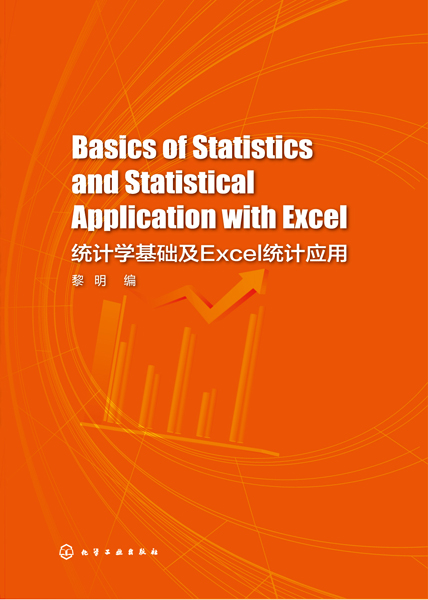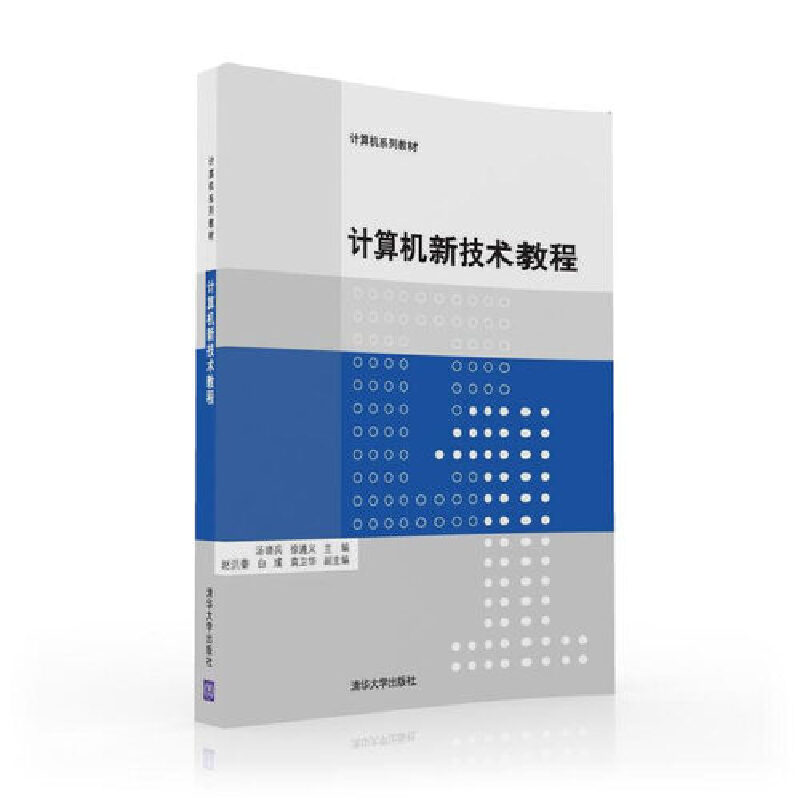进出口贸易实务(英文版)(慕课版) / 全国高等院校“十三五”贯穿式+立体化创新规划教材
定价:¥48.00
作者: 杨智华,张小衡,翟冬平
出版时间:2020-09
最新印次日期:2025-7
出版社:清华大学出版社
江苏省高等学校重点教材
试读- 清华大学出版社
- 9787302563228
- 1-4
- 361332
- 42264873-3
- 平装
- 16开
- 2020-09
- 389
- 256
- 经济学
- 经济与贸易类
- 国际贸易、国际商务
- 本科
作者简介
内容简介
《进出口贸易实务:慕课版:英文》结合我国进出口贸易的具体实践,秉承培养进出口经理人的目标,以货物进出口贸易中的习惯做法、贸易惯例和法律为依据,详细介绍了国际货物买卖合同的订立和履行、国际货物买卖的标的物、进出口商品的定价和汇率风险、国际货物运输与保险、国际结算以及进出口贸易争端与解决机制问题。
为尽可能地贴近进出口贸易实际并满足国际化人才培养需求,《进出口贸易实务:慕课版:英文》采用全英文编写,引导读者从总体上把握进出口业务流程、深入理解相关法律法规和惯例,针对重点和难点内容设计、选用了相关问题和案例,并配有丰富的在线课程资源和拓展阅读资料。《进出口贸易实务:慕课版:英文》可作为高等院校经管类专业学生学习国际贸易实务课程的教材,也可供国际贸易从业人员自学、参考。
为尽可能地贴近进出口贸易实际并满足国际化人才培养需求,《进出口贸易实务:慕课版:英文》采用全英文编写,引导读者从总体上把握进出口业务流程、深入理解相关法律法规和惯例,针对重点和难点内容设计、选用了相关问题和案例,并配有丰富的在线课程资源和拓展阅读资料。《进出口贸易实务:慕课版:英文》可作为高等院校经管类专业学生学习国际贸易实务课程的教材,也可供国际贸易从业人员自学、参考。
目录
目 录
Chapter 1 Introduction 1
1.1 The Importance of International Trade 1
1.2 Features of International Transactions 2
1.2.1 Transaction Risks 2
1.2.2 Institutional and Political
Risks 3
1.3 Organizations and Legal Environment
of International Trade 4
1.3.1 International Trade
Organizations 4
1.3.2 Legal System of International
Trade 5
1.4 Three-Step Trade Process 6
1.4.1 Preparation for Contract 7
1.4.2 Negotiation of Contract 7
1.4.3 Performance of Contract 8
1.5 Scope and Resources 9
1.5.1 Scope of This Book 9
1.5.2 Available Resources 10
Exercise 11
Part I Contracts for International Sale of Goods
Chapter 2 Formation of Contracts 14
2.1 Inquiry 14
2.2 Offer 15
2.2.1 What Is an Offer? 15
2.2.2 Effectiveness of an Offer 19
2.3 Counteroffer 20
2.4 Acceptance 20
2.4.1 What Is an Acceptance? 20
2.4.2 Late Acceptance 22
2.4.3 Withdrawal of an
Acceptance 22
2.5 Contracts in Writing 23
2.5.1 Countersignature 24
2.5.2 Elements of
International S/C 25
Exercise 26
Chapter 3 Performance of
Contracts 28
3.1 General Procedure of Export and
Import 28
3.1.1 For Export on CIF Term with
Payment by L/C 28
3.1.2 For Import on FOB Term with
Payment by L/C 29
3.2 Main Formalities 30
3.2.1 Goods Preparation 30
3.2.2 Transportation 30
3.2.3 Insurance 31
3.2.4 Inspection 32
3.2.5 Customs Clearance 32
3.2.6 Payment 34
3.2.7 Claims and Settlement 34
Exercise 35
Part II Subject Terms
Chapter 4 Name and Quality 38
4.1 Name of Commodity 38
4.2 Quality of Commodity 39
4.2.1 Sale by Sample 39
4.2.2 Sale by Description 41
Exercise 45
Chapter 5 Quantity 46
5.1 Systems of Units 46
5.1.1 Imperial System and US
Customary System 46
5.1.2 International System of
Units 47
5.1.3 To Clearly Define the
Adopted System 47
5.2 How to Measure Weight 48
5.2.1 Net Weight, Tare Weight and
Gross Weight 48
5.2.2 Other Weights 49
5.3 Quantity Tolerance 49
5.3.1 Quantity Tolerance in S/C 49
5.3.2 Quantity Tolerance in L/C 50
Exercise 51
Chapter 6 Packaging 52
6.1 Importance of Packaging in Import
and Export 53
6.1.1 To Protect the Goods during
Transit 53
6.1.2 To Facilitate Transportation 53
6.1.3 To Promote Sales 53
6.2 Types of Packaging Materials 54
6.2.1 Individual Packaging
Materials 54
6.2.2 Unitized Packaging
Materials 56
6.3 Marks on Packages 58
6.3.1 Marks on Individual
Shipping Packages 58
6.3.2 Marks on Containers 60
Exercise 64
Part III Trade Terms and Pricing
Chapter 7 Trade Terms 66
7.1 International Rules Associated with
Trade Terms 66
7.2 Main Features of
INCOTERMS 2020 69
7.2.1 Simpler and Clearer
Presentation 69
7.2.2 Substantive Changes 71
7.3 Basic Concepts Related to
Trade Terms 72
7.3.1 Critical Points 72
7.3.2 Obligations 73
7.3.3 Free 73
7.3.4 Customs Clearance and
Formalities 73
7.4 FOB, CFR and CIF of
INCOTERMS 2020 74
7.4.1 FOB 74
7.4.2 CFR 76
7.4.3 CIF 78
7.4.4 Comparison of FOB, CFR
and CIF 81
7.5 FCA, CPT and CIP of
INCOTERMS 2020 81
7.5.1 FCA 81
7.5.2 CPT 83
7.5.3 CIP 84
7.5.4 Comparison of FCA, CPT
and CIP 85
7.6 Other Terms of INCOTERMS 2020 86
7.6.1 EXW 86
7.6.2 FAS 86
7.6.3 DAP 87
7.6.4 DPU 87
7.6.5 DDP 88
Exercise 88
Chapter 8 Export Pricing and
Quotation 90
8.1 Pricing Strategies 90
8.1.1 Pricing Objectives 90
8.1.2 Pricing Strategies 91
8.2 Price Calculation for International Sale 92
8.2.1 Cost 92
8.2.2 Expenses 94
8.2.3 Expected Profit 97
8.3 Foreign Exchange Risk 98
8.3.1 Hazards of Foreign Exchange
Risk 98
8.3.2 FX Volatility and Controls 99
8.3.3 Options to Manage FX Risk 99
Exercise 102
Part IV Cargo Transport
Chapter 9 Ocean Transport 104
9.1 Shipping Services 104
9.1.1 Liner Service 104
9.1.2 Charter Service 107
9.2 Ocean Transport Documents 108
9.2.1 Bill of Lading 108
9.2.2 Sea Waybill 113
Exercise 115
Chapter 10 Other Modes of Transport
and Multimodal
Transport 116
10.1 Rail Transport 116
10.2 Road Transport 117
10.3 Air Transport 118
10.4 Inland Waterway Transport 118
10.5 Parcel Post Transport 119
10.6 Pipeline Transport 119
10.7 Multimodal Transport and
Containerization 120
Exercise 122
Chapter 11 Terms of Delivery 123
11.1 Time and Place of Delivery 123
11.1.1 Time of Delivery 123
11.1.2 Place of Delivery 125
11.2 Partial Shipment 126
11.3 Transshipment 128
11.4 Shipping Notice 129
Exercise 130
Part V Cargo Insurance
Chapter 12 Marine Cargo
Insurance 132
12.1 Principles of Insurance 132
12.2 Risks, Losses and Expenses in
Ocean Transport 134
12.2.1 Risks in Ocean Transport 134
12.2.2 Losses in Ocean Transport 135
12.2.3 Expenses in Ocean
Transport 138
12.3 Ocean Marine Cargo Clauses 139
12.3.1 Basic Coverage 139
12.3.2 Additional Coverage 141
12.4 Institute Cargo Clauses 144
12.4.1 ICC (A) 144
12.4.2 ICC (B) 145
12.4.3 ICC (C) 146
12.4.4 Summary of the Institute
Cargo Clauses 147
Exercise 148
Chapter 13 Cargo Insurance
Practice 149
13.1 Contracting for Insurance 149
13.1.1 Choice of Insurance
Coverage 149
13.1.2 Insured Amount and Insurance
Premium 150
13.1.3 Insurance Documents 151
13.2 Insurance Claim 153
13.2.1 Eligibility for Insurance
Claims 153
13.2.2 Procedures to Lodge a
Claim 154
Exercise 155
Part VI Payment
Chapter 14 Negotiable Instruments 158
14.1 Bill of Exchange 158
14.1.1 Requisite Form 158
14.1.2 Parties Involved 160
14.1.3 Types of Bills 161
14.1.4 Use of Bills 162
14.2 Promissory Note 163
14.2.1 Requisite Form 164
14.2.2 Types of Promissory Notes 165
14.3 Check 165
14.3.1 What Is Check? 165
14.3.2 Types of Check 166
Exercise 167
Chapter 15 Remittance and
Collection 168
15.1 Remittance 168
15.1.1 What Is Remittance? 168
15.1.2 Types of Remittance 168
15.2 Collection 170
15.2.1 What Is Collection? 170
15.2.2 Types of Collection 171
15.2.3 Finance in Payment by
Collection 174
15.2.4 Risk Comparison of Different
Types of Collection 175
Exercise 176
Chapter 16 Documentary Credit 177
16.1 What Is Letter of Credit? 177
16.1.1 Definition 177
16.1.2 Parties Involved 178
16.1.3 Features 179
16.1.4 Contents 180
16.2 Types of Credits 180
16.2.1 Irrevocable Credit and
Revocable Credit 181
16.2.2 Negotiable Credit 182
16.2.3 Sight Credit and Time
Credit 182
16.2.4 Confirmed Credit 183
16.2.5 Transferable Credit 183
16.2.6 Back-to-Back Credits 184
16.2.7 Reciprocal Credits 185
16.3 Payment by Letter of Credit 185
16.3.1 Payment by Non-negotiable
Credit 185
16.3.2 Payment by Negotiable
Credit 186
16.4 Expedition of L/C Establishment 187
16.5 Amendment of Letters of Credit 188
16.5.1 How to Proofread Letters of
Credit 189
16.5.2 How to Ask for
Amendment 193
16.6 Terms in Sale Contracts 194
16.6.1 L/C as the Only Payment
Mode 194
16.6.2 L/C with Other Payment
Mode 194
Exercise 196
Chapter 17 Documentation 198
17.1 Complying Presentation under
Letters of Credit 198
17.2 Important Documents Required by
Letters of Credit 200
17.2.1 Draft 200
17.2.2 Invoice 201
17.2.3 Packing List 203
17.2.4 Bill of Lading 204
17.2.5 Insurance Document 205
17.2.6 Inspection Certificate 206
17.2.7 Certificate of Origin 207
17.2.8 Other Documents Related
to Export 208
Exercise 208
Part VII Disputes and Settlement
Chapter 18 Inspection, Claim and
Force Majeure 212
18.1 Commodity Inspection 212
18.1.1 What Is Commodity
Inspection 212
18.1.2 Time and Places of
Commodity Inspection 213
18.1.3 Inspection Institutes 214
18.1.4 Inspection Certificates 216
18.1.5 Inspection Terms in Sale
Contracts 216
18.2 Breach of Contract Claim 217
18.2.1 Breach of Contract 217
18.2.2 Claims for Damages 219
18.2.3 Penalty 220
18.3 Force Majeure 221
18.3.1 What Is Force Majeure 221
18.3.2 Force Majeure Clause in Sale
Contracts 222
Exercise 223
Chapter 19 Dispute Resolution 225
19.1 Methods of Dispute Resolution 225
19.2 Arbitration 226
19.2.1 Arbitration Agreement 226
19.2.2 Arbitral Proceedings 229
Exercise 231
Glossary 233
References 245
Chapter 1 Introduction 1
1.1 The Importance of International Trade 1
1.2 Features of International Transactions 2
1.2.1 Transaction Risks 2
1.2.2 Institutional and Political
Risks 3
1.3 Organizations and Legal Environment
of International Trade 4
1.3.1 International Trade
Organizations 4
1.3.2 Legal System of International
Trade 5
1.4 Three-Step Trade Process 6
1.4.1 Preparation for Contract 7
1.4.2 Negotiation of Contract 7
1.4.3 Performance of Contract 8
1.5 Scope and Resources 9
1.5.1 Scope of This Book 9
1.5.2 Available Resources 10
Exercise 11
Part I Contracts for International Sale of Goods
Chapter 2 Formation of Contracts 14
2.1 Inquiry 14
2.2 Offer 15
2.2.1 What Is an Offer? 15
2.2.2 Effectiveness of an Offer 19
2.3 Counteroffer 20
2.4 Acceptance 20
2.4.1 What Is an Acceptance? 20
2.4.2 Late Acceptance 22
2.4.3 Withdrawal of an
Acceptance 22
2.5 Contracts in Writing 23
2.5.1 Countersignature 24
2.5.2 Elements of
International S/C 25
Exercise 26
Chapter 3 Performance of
Contracts 28
3.1 General Procedure of Export and
Import 28
3.1.1 For Export on CIF Term with
Payment by L/C 28
3.1.2 For Import on FOB Term with
Payment by L/C 29
3.2 Main Formalities 30
3.2.1 Goods Preparation 30
3.2.2 Transportation 30
3.2.3 Insurance 31
3.2.4 Inspection 32
3.2.5 Customs Clearance 32
3.2.6 Payment 34
3.2.7 Claims and Settlement 34
Exercise 35
Part II Subject Terms
Chapter 4 Name and Quality 38
4.1 Name of Commodity 38
4.2 Quality of Commodity 39
4.2.1 Sale by Sample 39
4.2.2 Sale by Description 41
Exercise 45
Chapter 5 Quantity 46
5.1 Systems of Units 46
5.1.1 Imperial System and US
Customary System 46
5.1.2 International System of
Units 47
5.1.3 To Clearly Define the
Adopted System 47
5.2 How to Measure Weight 48
5.2.1 Net Weight, Tare Weight and
Gross Weight 48
5.2.2 Other Weights 49
5.3 Quantity Tolerance 49
5.3.1 Quantity Tolerance in S/C 49
5.3.2 Quantity Tolerance in L/C 50
Exercise 51
Chapter 6 Packaging 52
6.1 Importance of Packaging in Import
and Export 53
6.1.1 To Protect the Goods during
Transit 53
6.1.2 To Facilitate Transportation 53
6.1.3 To Promote Sales 53
6.2 Types of Packaging Materials 54
6.2.1 Individual Packaging
Materials 54
6.2.2 Unitized Packaging
Materials 56
6.3 Marks on Packages 58
6.3.1 Marks on Individual
Shipping Packages 58
6.3.2 Marks on Containers 60
Exercise 64
Part III Trade Terms and Pricing
Chapter 7 Trade Terms 66
7.1 International Rules Associated with
Trade Terms 66
7.2 Main Features of
INCOTERMS 2020 69
7.2.1 Simpler and Clearer
Presentation 69
7.2.2 Substantive Changes 71
7.3 Basic Concepts Related to
Trade Terms 72
7.3.1 Critical Points 72
7.3.2 Obligations 73
7.3.3 Free 73
7.3.4 Customs Clearance and
Formalities 73
7.4 FOB, CFR and CIF of
INCOTERMS 2020 74
7.4.1 FOB 74
7.4.2 CFR 76
7.4.3 CIF 78
7.4.4 Comparison of FOB, CFR
and CIF 81
7.5 FCA, CPT and CIP of
INCOTERMS 2020 81
7.5.1 FCA 81
7.5.2 CPT 83
7.5.3 CIP 84
7.5.4 Comparison of FCA, CPT
and CIP 85
7.6 Other Terms of INCOTERMS 2020 86
7.6.1 EXW 86
7.6.2 FAS 86
7.6.3 DAP 87
7.6.4 DPU 87
7.6.5 DDP 88
Exercise 88
Chapter 8 Export Pricing and
Quotation 90
8.1 Pricing Strategies 90
8.1.1 Pricing Objectives 90
8.1.2 Pricing Strategies 91
8.2 Price Calculation for International Sale 92
8.2.1 Cost 92
8.2.2 Expenses 94
8.2.3 Expected Profit 97
8.3 Foreign Exchange Risk 98
8.3.1 Hazards of Foreign Exchange
Risk 98
8.3.2 FX Volatility and Controls 99
8.3.3 Options to Manage FX Risk 99
Exercise 102
Part IV Cargo Transport
Chapter 9 Ocean Transport 104
9.1 Shipping Services 104
9.1.1 Liner Service 104
9.1.2 Charter Service 107
9.2 Ocean Transport Documents 108
9.2.1 Bill of Lading 108
9.2.2 Sea Waybill 113
Exercise 115
Chapter 10 Other Modes of Transport
and Multimodal
Transport 116
10.1 Rail Transport 116
10.2 Road Transport 117
10.3 Air Transport 118
10.4 Inland Waterway Transport 118
10.5 Parcel Post Transport 119
10.6 Pipeline Transport 119
10.7 Multimodal Transport and
Containerization 120
Exercise 122
Chapter 11 Terms of Delivery 123
11.1 Time and Place of Delivery 123
11.1.1 Time of Delivery 123
11.1.2 Place of Delivery 125
11.2 Partial Shipment 126
11.3 Transshipment 128
11.4 Shipping Notice 129
Exercise 130
Part V Cargo Insurance
Chapter 12 Marine Cargo
Insurance 132
12.1 Principles of Insurance 132
12.2 Risks, Losses and Expenses in
Ocean Transport 134
12.2.1 Risks in Ocean Transport 134
12.2.2 Losses in Ocean Transport 135
12.2.3 Expenses in Ocean
Transport 138
12.3 Ocean Marine Cargo Clauses 139
12.3.1 Basic Coverage 139
12.3.2 Additional Coverage 141
12.4 Institute Cargo Clauses 144
12.4.1 ICC (A) 144
12.4.2 ICC (B) 145
12.4.3 ICC (C) 146
12.4.4 Summary of the Institute
Cargo Clauses 147
Exercise 148
Chapter 13 Cargo Insurance
Practice 149
13.1 Contracting for Insurance 149
13.1.1 Choice of Insurance
Coverage 149
13.1.2 Insured Amount and Insurance
Premium 150
13.1.3 Insurance Documents 151
13.2 Insurance Claim 153
13.2.1 Eligibility for Insurance
Claims 153
13.2.2 Procedures to Lodge a
Claim 154
Exercise 155
Part VI Payment
Chapter 14 Negotiable Instruments 158
14.1 Bill of Exchange 158
14.1.1 Requisite Form 158
14.1.2 Parties Involved 160
14.1.3 Types of Bills 161
14.1.4 Use of Bills 162
14.2 Promissory Note 163
14.2.1 Requisite Form 164
14.2.2 Types of Promissory Notes 165
14.3 Check 165
14.3.1 What Is Check? 165
14.3.2 Types of Check 166
Exercise 167
Chapter 15 Remittance and
Collection 168
15.1 Remittance 168
15.1.1 What Is Remittance? 168
15.1.2 Types of Remittance 168
15.2 Collection 170
15.2.1 What Is Collection? 170
15.2.2 Types of Collection 171
15.2.3 Finance in Payment by
Collection 174
15.2.4 Risk Comparison of Different
Types of Collection 175
Exercise 176
Chapter 16 Documentary Credit 177
16.1 What Is Letter of Credit? 177
16.1.1 Definition 177
16.1.2 Parties Involved 178
16.1.3 Features 179
16.1.4 Contents 180
16.2 Types of Credits 180
16.2.1 Irrevocable Credit and
Revocable Credit 181
16.2.2 Negotiable Credit 182
16.2.3 Sight Credit and Time
Credit 182
16.2.4 Confirmed Credit 183
16.2.5 Transferable Credit 183
16.2.6 Back-to-Back Credits 184
16.2.7 Reciprocal Credits 185
16.3 Payment by Letter of Credit 185
16.3.1 Payment by Non-negotiable
Credit 185
16.3.2 Payment by Negotiable
Credit 186
16.4 Expedition of L/C Establishment 187
16.5 Amendment of Letters of Credit 188
16.5.1 How to Proofread Letters of
Credit 189
16.5.2 How to Ask for
Amendment 193
16.6 Terms in Sale Contracts 194
16.6.1 L/C as the Only Payment
Mode 194
16.6.2 L/C with Other Payment
Mode 194
Exercise 196
Chapter 17 Documentation 198
17.1 Complying Presentation under
Letters of Credit 198
17.2 Important Documents Required by
Letters of Credit 200
17.2.1 Draft 200
17.2.2 Invoice 201
17.2.3 Packing List 203
17.2.4 Bill of Lading 204
17.2.5 Insurance Document 205
17.2.6 Inspection Certificate 206
17.2.7 Certificate of Origin 207
17.2.8 Other Documents Related
to Export 208
Exercise 208
Part VII Disputes and Settlement
Chapter 18 Inspection, Claim and
Force Majeure 212
18.1 Commodity Inspection 212
18.1.1 What Is Commodity
Inspection 212
18.1.2 Time and Places of
Commodity Inspection 213
18.1.3 Inspection Institutes 214
18.1.4 Inspection Certificates 216
18.1.5 Inspection Terms in Sale
Contracts 216
18.2 Breach of Contract Claim 217
18.2.1 Breach of Contract 217
18.2.2 Claims for Damages 219
18.2.3 Penalty 220
18.3 Force Majeure 221
18.3.1 What Is Force Majeure 221
18.3.2 Force Majeure Clause in Sale
Contracts 222
Exercise 223
Chapter 19 Dispute Resolution 225
19.1 Methods of Dispute Resolution 225
19.2 Arbitration 226
19.2.1 Arbitration Agreement 226
19.2.2 Arbitral Proceedings 229
Exercise 231
Glossary 233
References 245









